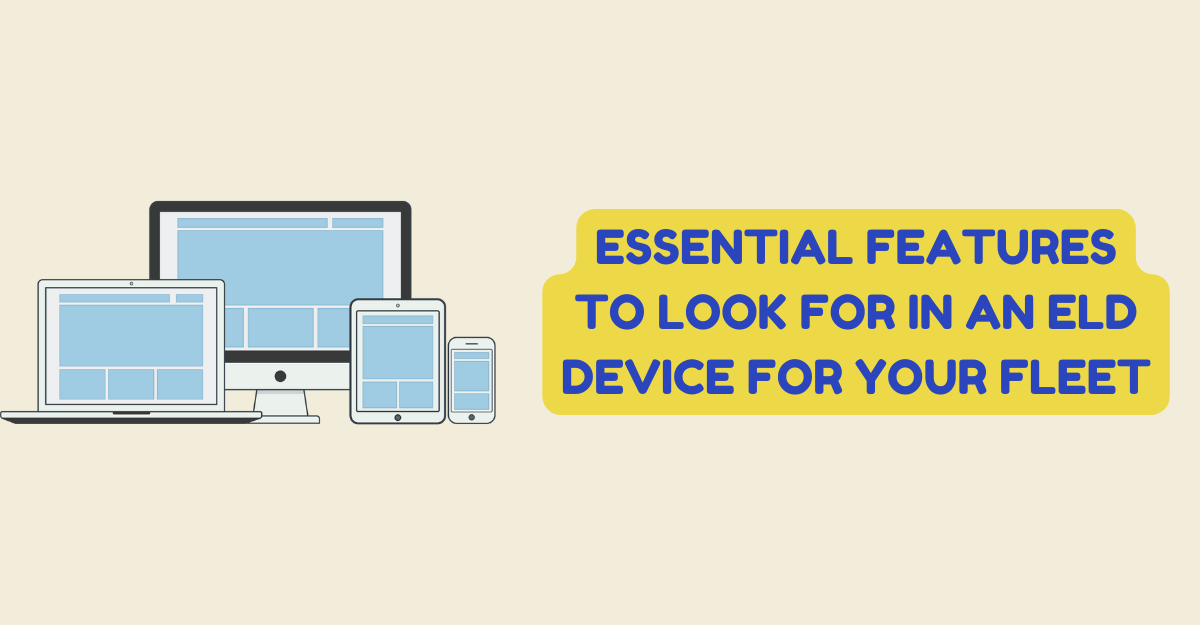
Aside from recording regulated service hours, an ELD trucking device also offers features that boost fleet productivity and safety. It helps drivers and fleet managers make better decisions by providing many insights.
Look for an ELD solution that is easy to install. Particular installation requires extra time and costs, so go for a plug-and-play option that can be installed in minutes.
1. Safety Alerts
A quality ELD device provides more than compliance, helping fleets to improve safety and reduce costs. The best devices include real-time GPS tracking to relay location data, reducing the need for dispatch to call drivers or provide customers with ETAs. They also feature additional driver behavior monitoring features to help develop a safe driving culture. Other key benefits of using an ELD include reducing time spent on paperwork and quicker roadside inspections.
Operators can benefit from their investment by combining an ELD solution with a telematics offering. In addition to HOS and RODS compliance, they can leverage engine fault codes for easier maintenance and repair, receive instant notifications of risky driving behaviors such as speeding or harsh braking detected by advanced AI technology, and more. These insights can save time and money and increase productivity in the long run.
2. Real-Time GPS Tracking
GPS fleet tracking gives your business a powerful real-time tool for monitoring drivers and assets. This enables you to dispatch jobs better, reduce fuel costs by sending drivers on more efficient routes, and economize on unnecessary truck idling — a significant cause of fleet emissions. In addition, you can monitor the location of expensive equipment like generators and containers, ensuring they are on job sites where they are needed.
A GPS tracker is also invaluable for monitoring the whereabouts of your vehicles and equipment to prevent theft. However, when selecting a GPS telematics system for your company, it must ensure it complies with privacy laws and limits its monitoring to working hours and work-related activities. Look for providers with strict data security protocols and comprehensive training and support. You should also consider a device with various mounting options, including hardwired and solar-powered devices. This flexibility will save you time and money in installation and maintenance.
3. Two-Way Communication
Crash incidents caused by driver fatigue or negligence can lead to expensive legal fees and repair costs. Fleet owners can avoid these risks by leveraging ELD solutions, including integrated video-based safety with real-time GPS tracking, to coach drivers and prevent harsh driving habits.
For instance, an ELD solution makes compliance effortless with a full suite of features that help truckers stay safe on the road. These include crash reporting, engine diagnostics, driver information, and geofencing capabilities that alert managers and drivers when a vehicle leaves a specific location.
These features bolster an already robust fleet management system that simplifies hours of service tracking for drivers and the back office. Additionally, the device is FMCSA-certified and offers two-way communication for accessible communication with motor carriers’ inspectors. This helps ensure strong compliance standards and reduces downtime caused by unforeseen events. It also helps fleets save money with fuel and maintenance.
4. Compliance Reporting
ELDs paired with fleet telematics solutions make tracking vehicle status, monitoring driver behavior, and coaching drivers on improving their safety standards easier. They also reduce engine idling and fuel consumption to help fleets save thousands of dollars in fuel costs annually. When paired with video-based safety solutions, they can even send alerts to the driver’s mobile device when risky driving patterns appear, such as hard cornering, speeding, and tailgating.
Final Words
While the federal ELD mandate and Hours of Service rule primarily focus on automating HOS, they have several additional benefits for fleets across all industries. In addition to less administrative work, an ELD with a GPS tracker makes it easy for operators to check in at truck stops and simplifies route planning. It can even automatically record fuel usage and driver logs, making it a one-stop shop for managing fleet compliance, safety, and productivity. In the long run, this helps improve CSA scores and ensures your fleet stays safe.